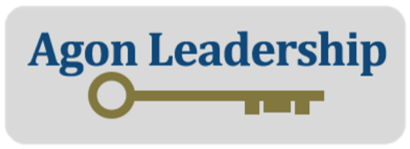Blog
As the year comes to a close, it’s worth pausing to ask a simple question: What brought you joy this year at work and in life? Joy doesn’t always arrive in big, headline moments. Often, it shows up quietly—in meaningful conversations, shared laughter, progress made, lessons learned, or the steady presence of people who support us. Sometimes joy is found in growth, sometimes in rest, and sometimes in simply getting through a challenging season with resilience and grace. Take a few minutes to reflect. What moments made you smile? When did you feel most connected? For what are you grateful? This reflection isn’t about ignoring the hard parts of the year. It’s about honoring the bright spots that sustained you through them. Recognizing joy helps us close the year with perspective and open the next one with hope. As the holidays approach, give yourself permission to slow down, savor meaningful moments, and share joy with others—through kindness, gratitude, and presence. May this season be filled with moments that lift your spirit, and may you carry that joy with you into the year ahead. 👉 Take a moment to pause this season—view the Reflecting on Joy one-pager and reflect on what brought meaning to your work and life this year. Wishing you a truly joy-filled Christmas season .
As you’re wrapping presents this season, it’s also a great time to wrap up your year with intention. The end of the year offers a natural pause—a chance to reflect, appreciate, and celebrate the people who made a difference along the way. At work, we often move from one deadline to the next without stopping to say thank you. Take a moment to recognize your teammates. Maybe it’s the coworker who always had your back, or the leader who helped you stretch and grow. A sincere “thank you” or a short handwritten note can go a long way. It doesn’t need to be elaborate—just genuine. The same holds true in your personal life. When was the last time you told a friend or family member how much they mean to you? Between holiday plans and to-do lists, it’s easy to forget that our presence often matters more than any present. Every year brings both highs and lows. As this one comes to a close, choose to focus on what went right. Celebrate the small wins and acknowledge the people who supported you through the challenging moments. So, while you’re taping up gift boxes, take a little time to wrap up your year with gratitude. Send the text. Write the card. Let people know they’re valued. After all, the most meaningful gift you can give is helping someone feel truly appreciated. Want more simple, meaningful ways to express appreciation—without overspending? 👉 View Sharing Joy at Work Without Breaking the Bank for practical ideas you can use right away.

In Erica Dhawan’s book, Get Big Things Done, she defines Connectional Intelligence as the ability to combine knowledge, networks, and relationships to drive meaningful results. In today’s busy workplace, it’s not just what you know—it’s how well you connect that turns good ideas into big outcomes. Strong Connectional Intelligence within a team strengthens workplace morale and productivity by impacting four key attributes of high-performance cultures: Value Visibly – People perform better when they know their contributions matter. Leaders who highlight strengths, acknowledge effort, and celebrate progress create a culture where great work becomes contagious. Communicate Carefully – In an age of nonstop messages, clarity is a competitive advantage. Thoughtful communication reduces confusion, prevents conflict, and ensures that everyone moves forward with shared understanding. Collaborate Confidently – Connectional Intelligence flourishes when people feel empowered to contribute. Confident collaboration means inviting diverse perspectives, leveraging individual superpowers, and creating space for smart problem-solving. Trust Totally – Trust is the anchor of all high-performing teams. When leaders show reliability, transparency, and empathy, people take risks, share ideas, and stay aligned toward common goals. Connectional Intelligence helps teams innovate faster, break down silos, and accomplish what truly matters. Want to learn more? Visit Erica Dhawan’s website to explore her full body of work and deepen your understanding of Connectional Intelligence.

When people hear “psychological safety,” they often imagine a workplace where everything feels easy and conflict-free. But that’s not what true psychological safety is — and it’s not what high-performing teams need. As leadership expert R. Michael Anderson points out, work and life include tough days, unexpected problems, and moments that stretch us. A psychologically safe workplace doesn’t remove those realities. Instead, it gives people the confidence and support to face them. A safe workplace is one where employees can struggle without fear of embarrassment… try new skills without being put down… ask questions, make mistakes, and keep moving forward. It’s a place where people know their leader is behind them — not by preventing discomfort, but by helping them learn through it. Psychological safety isn’t about coddling or creating a predictable bubble. Real safety looks like this: · You may hear difficult feedback, but it helps you grow. · You are encouraged to take risks, and supported when you slip. · You are stretched beyond your comfort zone, and guided along the way. When leaders create this balance — support plus stretch — people build resilience, confidence, and higher performance. To explore more of these ideas, visit R. Michael Anderson's website .

As leaders, we know Thanksgiving week is prime time for employee appreciation. But here's the thing—a generic "thanks everyone" email hits differently for different people. Dr. Paul White's research on the 5 Languages of Appreciation in the Workplace offers a smarter approach. Just like people receive love differently, your team members feel valued in distinct ways: through words of affirmation, quality time, acts of service, tangible gifts, or physical touch (think handshakes and high-fives in professional settings). That all-star on your team? She might light up from a handwritten note praising her specific contributions. Your behind-the-scenes problem-solver might feel more appreciated if you help him out by clearing his schedule for an afternoon so he can tackle his backlog. This Thanksgiving, skip the one-size-fits-all approach. Take ten minutes to consider how each team member prefers to be recognized. It's not about grand gestures—it's about matching your gratitude to what actually resonates with each individual. When appreciation lands in someone's preferred language, it doesn't just feel nice. It builds loyalty, boosts morale, and reminds people why they show up every day. That's something worth being thankful for. Curious about what languages are preferred? Click here to learn more!

In most organizations, the instinct is to add —more goals, more projects, more meetings. But as Juliet Funt, founder of the Juliet Funt Group, teaches in her Strategic Choice process, real leadership strength lies in deciding what to stop doing . Strategic Choice is the intentional narrowing of priorities—cutting away the clutter so teams can focus on what truly drives results. It’s a disciplined act of letting go: saying no to good ideas so there’s room for the great ones. Funt’s approach challenges leaders to pause, think, and create the mental and operational space their people need to perform at their best. By removing unnecessary tasks and misplaced effort, leaders make room for precision, innovation, and real thinking time. This isn’t about doing less—it’s about doing what matters most. When businesses adopt this mindset, they replace overwhelm with clarity and regain control of their time, energy, and outcomes. For small to mid-sized companies, embracing Strategic Choice can transform busyness into focus—and that focus is where sustainable growth begins. Want a quick visual overview? View Strategic Choice: Making Room for What Matters to see how this process helps leaders focus on what truly drives results.

Hey team leaders! Ever wonder why some companies soar while others stumble? Patrick Lencioni's bestseller, The Five Dysfunctions of a Team , nails it: workplace dysfunctions such as no trust, fear of conflict, lack of commitment, avoiding accountability, and ignoring results lead to mediocre performance at best. But here's the good news—smart leadership development changes the game! Start with building trust . Train leaders to open up and be vulnerable. Teams bond, ideas flow, and costly mistakes drop. Next, embrace healthy conflict . Teach team leaders to make it safe for team members to share the pros and cons of current or new ways of doing things. This helps everyone understand different perspectives. Then, drive commitment . Leaders who clarify goals, ask everyone to share their level of buy-in, and address their concerns get everyone bought in. People focus on high value work and get more done. . Hold folks accountable through coaching. Leaders learn to give kind, direct feedback by praising good work and calmly providing more training as needed. Turnover plummets and the quality and quantity of work improves. Finally, focus on results . Be clear on expectations. Keep score by monitoring progress weekly or daily. Acknowledge team wins when the goals are met. Winning sports teams pay attention to these Five Behaviors of a Team. How would a World Series winner have been determined this week without trust among the players and coaches, openness to tough coaching, the whole team working together, players focusing on their specific positions, and getting players around the bases to get the top score? Every workplace can benefit from these team behaviors as well. Lencioni's research proves it: Companies who prepare their leaders to overcome these 5 common workplace dysfunctions, improve the culture and see huge financial gains. Invest in your leaders today. Your bottom line will thank you! Click here to learn more about the painful cost of team dysfunction.

Want to boost your performance? According to James Hewitt, author of Regenerative Performance , a truly high-performance day doesn't begin when your alarm goes off—it starts the night before. Hewitt shows that rest isn't a reward you earn after a busy day; it's a vital part of your work strategy. Think of sleep as a required meeting for your brain and body to repair and prepare. Without proper rest, you can't show up as your best self, and the consequences are serious. Here’s a startling fact from research: Staying awake for 17 to 19 hours straight can impair your performance as much as having a blood alcohol concentration (BAC) of 0.05% . While the legal limit for driving in the U.S. is 0.08% BAC, many countries consider 0.05% to be legally impaired. After 24 hours of wakefulness, impairment is similar to having a 0.10% BAC, which is well over the legal limit. This level of fatigue slows your reaction time by up to 50%! To avoid this dangerous drop in performance, Hewitt offers a few top tips for better sleep: Create a Buffer: Spend the hour before bed winding down. Avoid work, stressful news, and intense exercise. Manage Your Light: Dim the lights and stop using electronic screens about 30 minutes before sleep. Be Consistent: Go to bed and wake up around the same time every day. By making sleep a priority, you're not just resting; you're actively preparing for success with a sharp, clear, and high-performing mind. View Maximize Your Day to see exactly how fatigue affects your performance!

In his book, Regenerative Performance, author James Hewitt suggests thinking about your brainpower using the idea of cognitive gears. This simple idea can help you manage your energy and get more done without burning out. Just like a car, your mind has different gears: high, middle, and low. Learning to switch between them is key to working smarter. Understanding the Gears The high gear is for your toughest, most important work—the stuff that needs all your focus, like solving a hard problem or writing a detailed report. Use this gear when you have lots of energy and can block out all distractions. It's powerful, but you can’t stay in it for long; it drains your energy quickly. The middle gear is your everyday speed. Think of it as "autopilot" for tasks that need less intense focus, such as checking emails, attending routine meetings, or working on familiar projects. You can stay in this gear for longer stretches, and it's where most of your day-to-day work happens. The low gear is for recovery and maintenance. This isn't about working at all! It's about taking breaks, moving your body, and doing activities that let your mind rest, like going for a walk or chatting with a co-worker. Using the low gear helps you recharge so you can shift back into middle or high gear when you need to. Drive Your Day Smarter The secret to regenerative performance is to be mindful of which gear you're in. Don’t try to do high-gear work all day. Schedule short, focused bursts in high gear, then shift to middle gear for less demanding tasks, and always make time for the low gear breaks. By consciously managing your cognitive gears, you'll improve your focus and keep your performance high without running out of gas. Want a quick visual reminder? Check out Cognitive Gears , summarizing these gears!
As the year comes to a close, it’s worth pausing to ask a simple question: What brought you joy this year at work and in life? Joy doesn’t always arrive in big, headline moments. Often, it shows up quietly—in meaningful conversations, shared laughter, progress made, lessons learned, or the steady presence of people who support us. Sometimes joy is found in growth, sometimes in rest, and sometimes in simply getting through a challenging season with resilience and grace. Take a few minutes to reflect. What moments made you smile? When did you feel most connected? For what are you grateful? This reflection isn’t about ignoring the hard parts of the year. It’s about honoring the bright spots that sustained you through them. Recognizing joy helps us close the year with perspective and open the next one with hope. As the holidays approach, give yourself permission to slow down, savor meaningful moments, and share joy with others—through kindness, gratitude, and presence. May this season be filled with moments that lift your spirit, and may you carry that joy with you into the year ahead. 👉 Take a moment to pause this season—view the Reflecting on Joy one-pager and reflect on what brought meaning to your work and life this year. Wishing you a truly joy-filled Christmas season .
As you’re wrapping presents this season, it’s also a great time to wrap up your year with intention. The end of the year offers a natural pause—a chance to reflect, appreciate, and celebrate the people who made a difference along the way. At work, we often move from one deadline to the next without stopping to say thank you. Take a moment to recognize your teammates. Maybe it’s the coworker who always had your back, or the leader who helped you stretch and grow. A sincere “thank you” or a short handwritten note can go a long way. It doesn’t need to be elaborate—just genuine. The same holds true in your personal life. When was the last time you told a friend or family member how much they mean to you? Between holiday plans and to-do lists, it’s easy to forget that our presence often matters more than any present. Every year brings both highs and lows. As this one comes to a close, choose to focus on what went right. Celebrate the small wins and acknowledge the people who supported you through the challenging moments. So, while you’re taping up gift boxes, take a little time to wrap up your year with gratitude. Send the text. Write the card. Let people know they’re valued. After all, the most meaningful gift you can give is helping someone feel truly appreciated. Want more simple, meaningful ways to express appreciation—without overspending? 👉 View Sharing Joy at Work Without Breaking the Bank for practical ideas you can use right away.

In Erica Dhawan’s book, Get Big Things Done, she defines Connectional Intelligence as the ability to combine knowledge, networks, and relationships to drive meaningful results. In today’s busy workplace, it’s not just what you know—it’s how well you connect that turns good ideas into big outcomes. Strong Connectional Intelligence within a team strengthens workplace morale and productivity by impacting four key attributes of high-performance cultures: Value Visibly – People perform better when they know their contributions matter. Leaders who highlight strengths, acknowledge effort, and celebrate progress create a culture where great work becomes contagious. Communicate Carefully – In an age of nonstop messages, clarity is a competitive advantage. Thoughtful communication reduces confusion, prevents conflict, and ensures that everyone moves forward with shared understanding. Collaborate Confidently – Connectional Intelligence flourishes when people feel empowered to contribute. Confident collaboration means inviting diverse perspectives, leveraging individual superpowers, and creating space for smart problem-solving. Trust Totally – Trust is the anchor of all high-performing teams. When leaders show reliability, transparency, and empathy, people take risks, share ideas, and stay aligned toward common goals. Connectional Intelligence helps teams innovate faster, break down silos, and accomplish what truly matters. Want to learn more? Visit Erica Dhawan’s website to explore her full body of work and deepen your understanding of Connectional Intelligence.

When people hear “psychological safety,” they often imagine a workplace where everything feels easy and conflict-free. But that’s not what true psychological safety is — and it’s not what high-performing teams need. As leadership expert R. Michael Anderson points out, work and life include tough days, unexpected problems, and moments that stretch us. A psychologically safe workplace doesn’t remove those realities. Instead, it gives people the confidence and support to face them. A safe workplace is one where employees can struggle without fear of embarrassment… try new skills without being put down… ask questions, make mistakes, and keep moving forward. It’s a place where people know their leader is behind them — not by preventing discomfort, but by helping them learn through it. Psychological safety isn’t about coddling or creating a predictable bubble. Real safety looks like this: · You may hear difficult feedback, but it helps you grow. · You are encouraged to take risks, and supported when you slip. · You are stretched beyond your comfort zone, and guided along the way. When leaders create this balance — support plus stretch — people build resilience, confidence, and higher performance. To explore more of these ideas, visit R. Michael Anderson's website .

As leaders, we know Thanksgiving week is prime time for employee appreciation. But here's the thing—a generic "thanks everyone" email hits differently for different people. Dr. Paul White's research on the 5 Languages of Appreciation in the Workplace offers a smarter approach. Just like people receive love differently, your team members feel valued in distinct ways: through words of affirmation, quality time, acts of service, tangible gifts, or physical touch (think handshakes and high-fives in professional settings). That all-star on your team? She might light up from a handwritten note praising her specific contributions. Your behind-the-scenes problem-solver might feel more appreciated if you help him out by clearing his schedule for an afternoon so he can tackle his backlog. This Thanksgiving, skip the one-size-fits-all approach. Take ten minutes to consider how each team member prefers to be recognized. It's not about grand gestures—it's about matching your gratitude to what actually resonates with each individual. When appreciation lands in someone's preferred language, it doesn't just feel nice. It builds loyalty, boosts morale, and reminds people why they show up every day. That's something worth being thankful for. Curious about what languages are preferred? Click here to learn more!

In most organizations, the instinct is to add —more goals, more projects, more meetings. But as Juliet Funt, founder of the Juliet Funt Group, teaches in her Strategic Choice process, real leadership strength lies in deciding what to stop doing . Strategic Choice is the intentional narrowing of priorities—cutting away the clutter so teams can focus on what truly drives results. It’s a disciplined act of letting go: saying no to good ideas so there’s room for the great ones. Funt’s approach challenges leaders to pause, think, and create the mental and operational space their people need to perform at their best. By removing unnecessary tasks and misplaced effort, leaders make room for precision, innovation, and real thinking time. This isn’t about doing less—it’s about doing what matters most. When businesses adopt this mindset, they replace overwhelm with clarity and regain control of their time, energy, and outcomes. For small to mid-sized companies, embracing Strategic Choice can transform busyness into focus—and that focus is where sustainable growth begins. Want a quick visual overview? View Strategic Choice: Making Room for What Matters to see how this process helps leaders focus on what truly drives results.

Hey team leaders! Ever wonder why some companies soar while others stumble? Patrick Lencioni's bestseller, The Five Dysfunctions of a Team , nails it: workplace dysfunctions such as no trust, fear of conflict, lack of commitment, avoiding accountability, and ignoring results lead to mediocre performance at best. But here's the good news—smart leadership development changes the game! Start with building trust . Train leaders to open up and be vulnerable. Teams bond, ideas flow, and costly mistakes drop. Next, embrace healthy conflict . Teach team leaders to make it safe for team members to share the pros and cons of current or new ways of doing things. This helps everyone understand different perspectives. Then, drive commitment . Leaders who clarify goals, ask everyone to share their level of buy-in, and address their concerns get everyone bought in. People focus on high value work and get more done. . Hold folks accountable through coaching. Leaders learn to give kind, direct feedback by praising good work and calmly providing more training as needed. Turnover plummets and the quality and quantity of work improves. Finally, focus on results . Be clear on expectations. Keep score by monitoring progress weekly or daily. Acknowledge team wins when the goals are met. Winning sports teams pay attention to these Five Behaviors of a Team. How would a World Series winner have been determined this week without trust among the players and coaches, openness to tough coaching, the whole team working together, players focusing on their specific positions, and getting players around the bases to get the top score? Every workplace can benefit from these team behaviors as well. Lencioni's research proves it: Companies who prepare their leaders to overcome these 5 common workplace dysfunctions, improve the culture and see huge financial gains. Invest in your leaders today. Your bottom line will thank you! Click here to learn more about the painful cost of team dysfunction.

Want to boost your performance? According to James Hewitt, author of Regenerative Performance , a truly high-performance day doesn't begin when your alarm goes off—it starts the night before. Hewitt shows that rest isn't a reward you earn after a busy day; it's a vital part of your work strategy. Think of sleep as a required meeting for your brain and body to repair and prepare. Without proper rest, you can't show up as your best self, and the consequences are serious. Here’s a startling fact from research: Staying awake for 17 to 19 hours straight can impair your performance as much as having a blood alcohol concentration (BAC) of 0.05% . While the legal limit for driving in the U.S. is 0.08% BAC, many countries consider 0.05% to be legally impaired. After 24 hours of wakefulness, impairment is similar to having a 0.10% BAC, which is well over the legal limit. This level of fatigue slows your reaction time by up to 50%! To avoid this dangerous drop in performance, Hewitt offers a few top tips for better sleep: Create a Buffer: Spend the hour before bed winding down. Avoid work, stressful news, and intense exercise. Manage Your Light: Dim the lights and stop using electronic screens about 30 minutes before sleep. Be Consistent: Go to bed and wake up around the same time every day. By making sleep a priority, you're not just resting; you're actively preparing for success with a sharp, clear, and high-performing mind. View Maximize Your Day to see exactly how fatigue affects your performance!

In his book, Regenerative Performance, author James Hewitt suggests thinking about your brainpower using the idea of cognitive gears. This simple idea can help you manage your energy and get more done without burning out. Just like a car, your mind has different gears: high, middle, and low. Learning to switch between them is key to working smarter. Understanding the Gears The high gear is for your toughest, most important work—the stuff that needs all your focus, like solving a hard problem or writing a detailed report. Use this gear when you have lots of energy and can block out all distractions. It's powerful, but you can’t stay in it for long; it drains your energy quickly. The middle gear is your everyday speed. Think of it as "autopilot" for tasks that need less intense focus, such as checking emails, attending routine meetings, or working on familiar projects. You can stay in this gear for longer stretches, and it's where most of your day-to-day work happens. The low gear is for recovery and maintenance. This isn't about working at all! It's about taking breaks, moving your body, and doing activities that let your mind rest, like going for a walk or chatting with a co-worker. Using the low gear helps you recharge so you can shift back into middle or high gear when you need to. Drive Your Day Smarter The secret to regenerative performance is to be mindful of which gear you're in. Don’t try to do high-gear work all day. Schedule short, focused bursts in high gear, then shift to middle gear for less demanding tasks, and always make time for the low gear breaks. By consciously managing your cognitive gears, you'll improve your focus and keep your performance high without running out of gas. Want a quick visual reminder? Check out Cognitive Gears , summarizing these gears!

